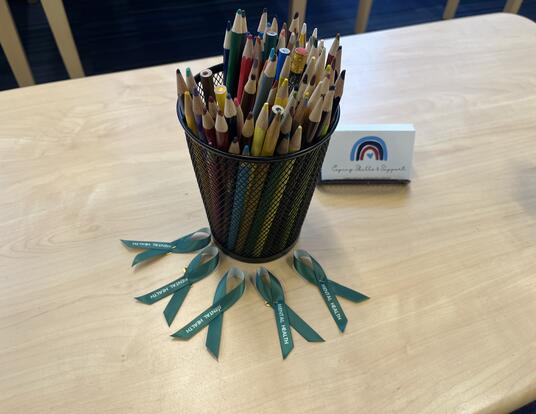Find Your Center: Looking Back at Lehman Hall
Marking the building’s 100-year evolution from the Counting House to the Student Center
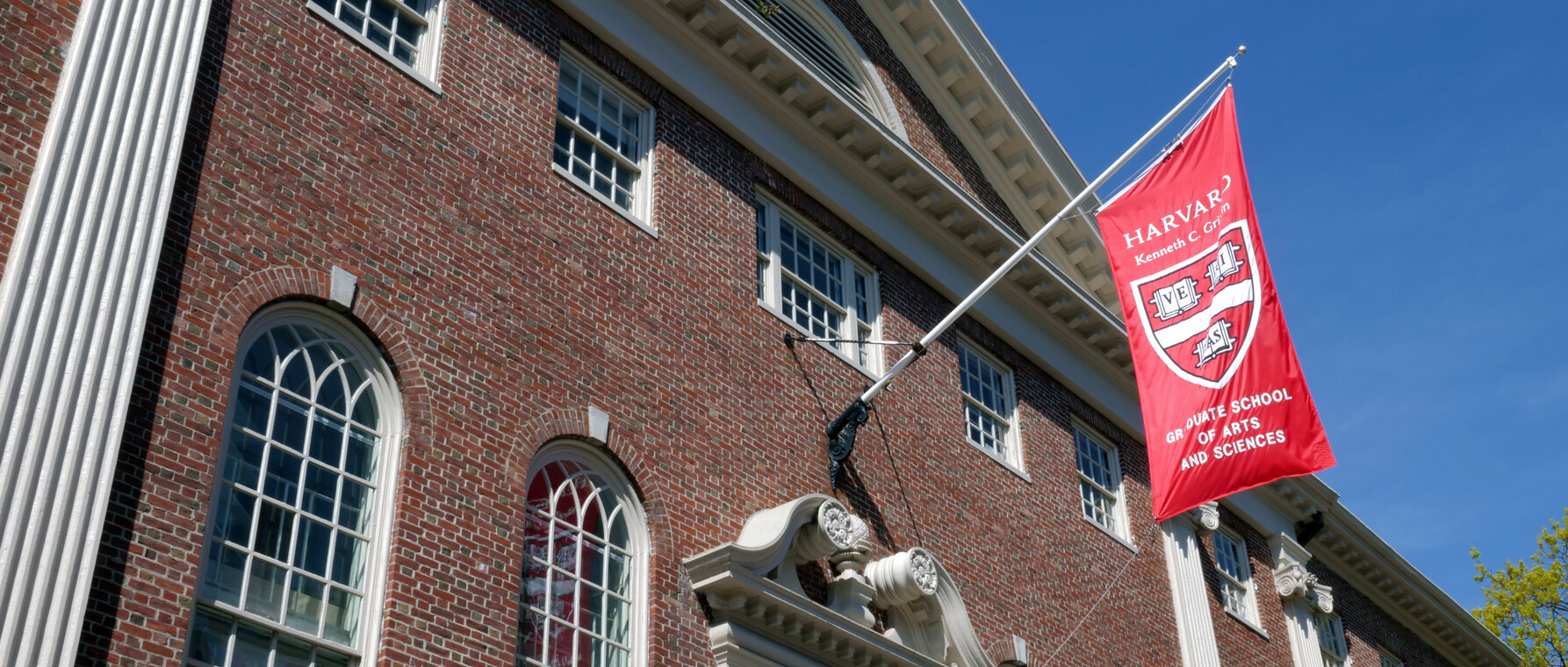
Walk up the stairs and into the lobby of Lehman Hall and you’ll see friends chatting, debating, and problem-solving over burritos, rice bowls, and ramen—and under grand chandeliers. Between meals, you can often hear a student playing the grand piano. Upstairs on the mezzanine level, you may find the Harvard Griffin GSAS Student Council or one of more than fifty student groups holding a leadership meeting. Up one more flight on the third floor you can hear the tap of billiard or ping pong balls in the game room, the sound of laughter at a favorite TV show, or the tumble of a Jenga tower in collapse.
The home of the Student Center at the Harvard Kenneth C. Griffin Graduate School of Arts and Sciences (GSAS), Lehman Hall is the beating heart of a vibrant community—the only location on campus dedicated specifically to welcoming all Harvard Griffin GSAS students. Whether grabbing a quick coffee from the Café Gato Rojo in the basement, or participating in one of the Center’s many events, students from across the University come here to converse, commune, and connect.
But it was not always this way. Now celebrating the 100th anniversary of its opening, Lehman Hall’s original purpose was much different than its current function. And the intervening years included many twists and turns before the building became the place where PhD and master’s students could “find their Center.”
The Counting House

It is the early 1920s and architect Charles Allerton Coolidge, Harvard College class of 1881, strolls down Massachusetts Avenue to Harvard Square. Felt hat in hand, he stops at the southwest corner of Harvard Yard and imagines the building he has just designed.
On the land where Harvard Law School’s Dane Hall was razed by fire, the structure will cordon off the Yard from the business and bustle of the Square. It will create a natural courtyard between the undergraduate dormitories of Matthews and Grays halls that will impress visitors who enter campus through Wadsworth Gate.
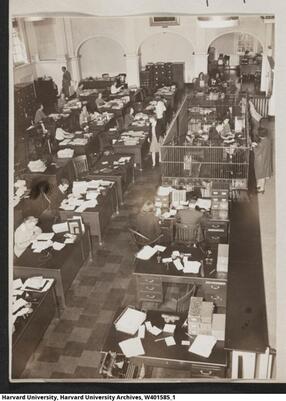
Designed in the classic Georgian style, the new structure will feature grand pilasters running up three stories, ornate pediments adorning the front and back, and arched windows to accentuate the natural light from the Yard and the Square.
Coolidge, whose work on campus would also include the spectacular new Quincy Street home of the William Hayes Fogg Museum of Harvard College, takes a deep breath and readies himself for the project’s launch. In the months ahead, the building rises until 1924, when the sounds of construction give way to the ring of telephones and the clicks of typewriter keys and check machines. Named after Arthur Lehman, a prominent donor, and financed partly by Harvard Business School, Lehman Hall takes its place as the University’s new bursar’s office. Originally known as the Counting House, the bursar’s office manages accounts, billing, and financial collection processes for students. Before long, it is joined in Lehman Hall by the office of the Harvard alumni directory.
A New Home on Campus
The 1950s and 1960s transformed the building’s purpose and function. The benefits of the federal Servicemembers' Readjustment Act of 1944—the GI Bill of Rights—provided unprecedented access to higher education for those who had served in the US military during World War II. As a result, many past the traditional age of attendance enrolled at the College, electing to live off campus. To provide these students a space of their own—and as part of efforts to consolidate University administration—Harvard moved the bursar’s and alumni offices elsewhere and made Lehman Hall the site of Dudley House. Out went the typewriters and in came a library, fireplaces, and luxury furnishings to create a refuge from the bustle of the Square and the noise of the dining halls.
Dudley House’s mission was to create a community for those outside the traditional undergraduate house system. With the change, Lehman Hall became a place where commuting students could feel they belonged at Harvard too—a role the building still plays today.
Then a bold new experiment. In the 1970s, Harvard Griffin GSAS students were invited to become “social members” of Dudley House by house masters (known today as faculty deans) Jean and Elizabeth Mayer. Now, undergraduates could interact informally with the graduate students who often taught their courses. Lehman’s lounging spaces, dining hall, and staircases became places to connect about research, teaching, and the passion for knowledge. Thanks to the initiative’s success, Harvard Griffin GSAS students got a room of their own at Dudley House in 1983, the Graduate Student Lounge.
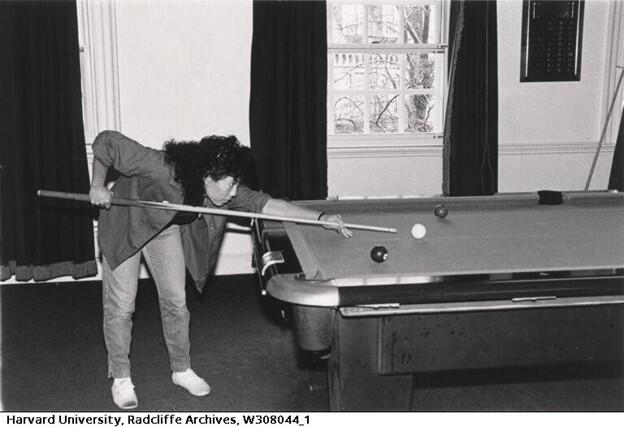
After years of advocacy by students and administrators, Dudley House in the 1990s formally broadened its mission to include serving Harvard Griffin GSAS students as well as non-resident undergraduates. In 2019, the School’s students finally got a home of their own when Harvard College assumed oversight of the non-resident undergraduate community, and Lehman Hall became the Student Center at Harvard Griffin GSAS, as it is today.
During the building’s centennial year, Harvard Griffin GSAS students are invited to learn more about Lehman as well as upcoming programming and leadership opportunities through the Engage website. Explore Lehman Hall online to see which facilities and resources are on each floor. And don’t forget to stop by the third floor and say hello to the staff who make Lehman the friendliest place on campus for the more than 4,500 students of Harvard Griffin GSAS. There’s never been a better time to find your Center!
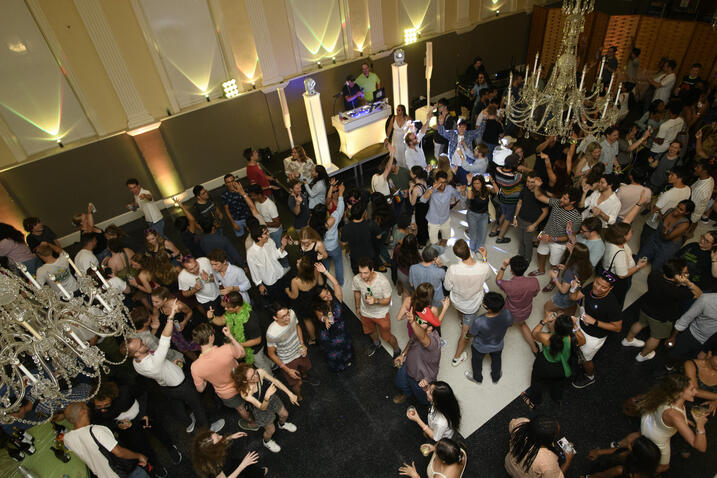
Get the Latest Updates
Join Our Newsletter
Subscribe to Colloquy Podcast
Simplecast




